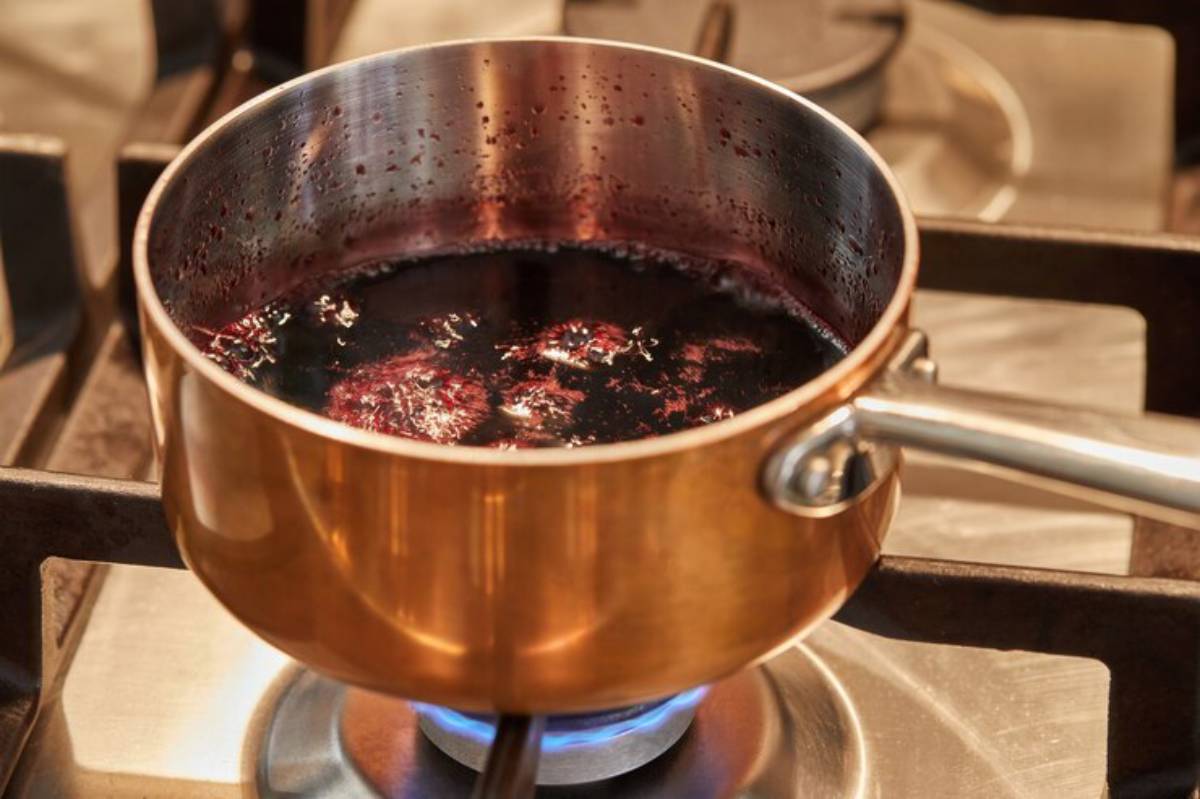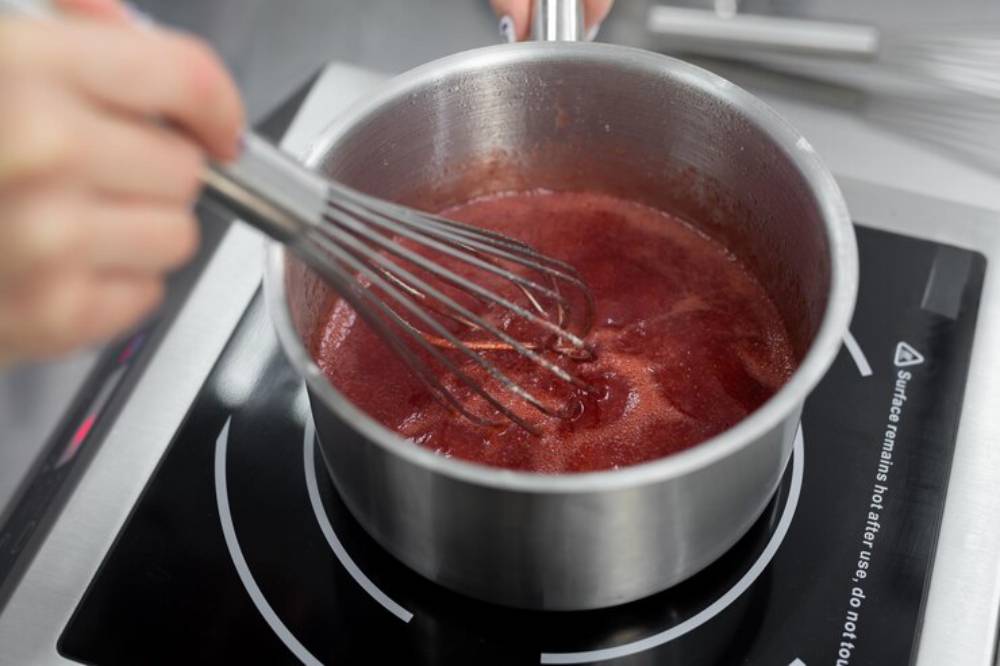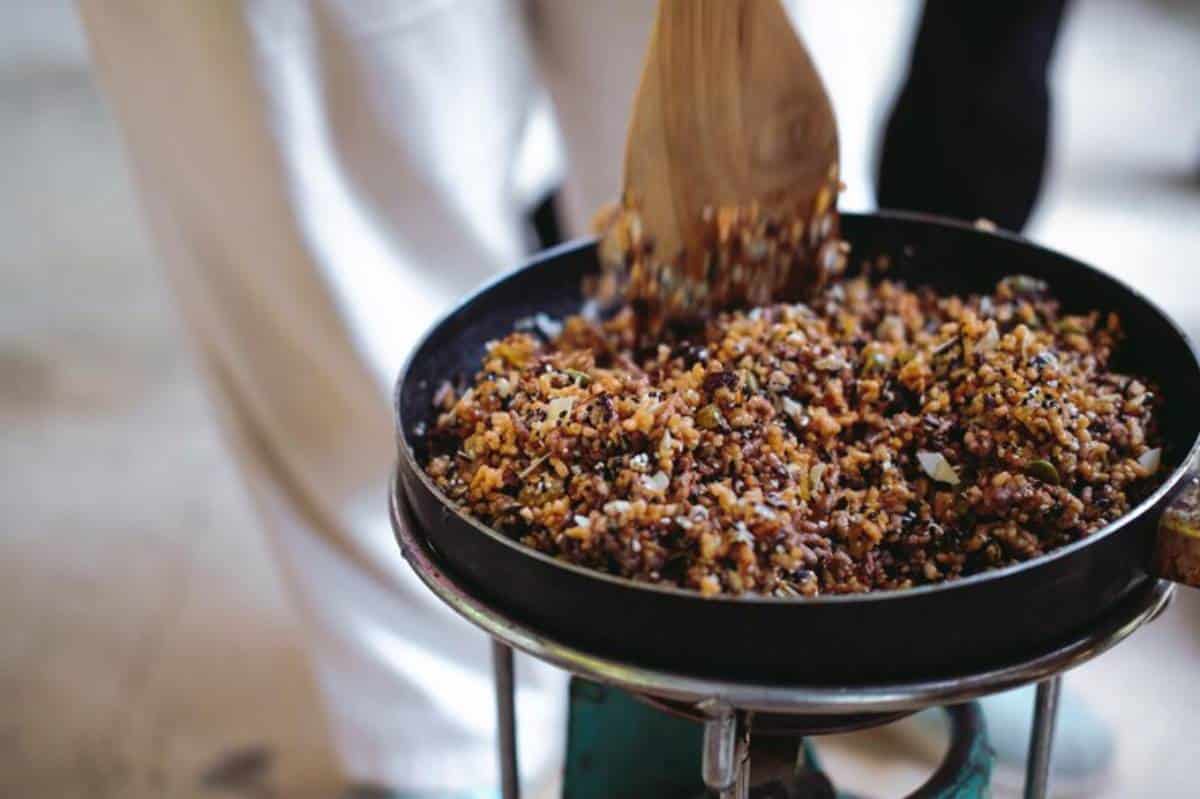
Reductions 101: Flavour Concentration Techniques
Turning Liquid Into Flavour Gold
There’s a quiet thrill in watching a sauce transform from thin and ordinary to thick, glossy, and full of complexity. It’s a small kitchen win when a bubbling pan reduces to a thick sauce. This change takes a meal from good to great.
This is the art of reduction. And in gourmet cooking, it’s a foundational skill.
Reduction is the key to unforgettable dishes. Whether you’re making a rich red wine sauce for steak or enhancing a vegetable jus for roasted roots, it adds depth and flavor. It’s not flashy. It’s not complicated. But it demands patience, technique, and an understanding of flavour layering.
In this guide, we’ll cover sauce reduction. You’ll learn the science behind it, how to build flavour, which liquids work best, and how to troubleshoot problems. If you’ve ever wanted to master the kind of sauces that chefs pour tableside with pride, this is your entry point.
What Is a Sauce Reduction?

A Simple Definition
At its core, reduction is the process of simmering or boiling a liquid — stock, wine, juice, or sauce — to evaporate water content. This concentrates the remaining flavour and thickens the consistency.
Reduction can serve several purposes:
- Enhance flavour by intensifying sugars, acids, and savoury notes
- Improve texture by making sauces clingy or syrupy
- Refine appearance with a glossy, restaurant-style finish
In short, you’re not just reducing volume. You’re concentrating the soul of your sauce.
Why Reduction Is Central to Gourmet Cooking
Building Layers of Complexity
When you reduce a sauce, you’re not just shrinking it — you’re developing it. Caramelisation, Maillard reaction, and flavour mingling happen as ingredients spend time over heat. The longer it simmers (within reason), the more depth you build.
That’s why reductions appear across cuisines and applications:
- A classic red wine reduction for beef
- A balsamic glaze over grilled vegetables
- A seafood fumet finished with cream
- A citrus reduction drizzled over the duck
Texture That Feels Luxurious
We eat with our eyes and mouths, and reduced sauces do both jobs well. They catch the light, cling to proteins, and leave behind bold traces on the plate. This isn’t just visual — it helps sauces “stick” to the main ingredient, carrying flavour in every bite.
Common Liquids Used in Reductions
You can reduce almost any liquid, but some ingredients lend themselves especially well to this technique.
Red Wine
- Best for: Beef, mushrooms, lentils, lamb
- Flavour profile: Rich, fruity, acidic
- Tip: Choose a full-bodied, dry wine for depth (Cabernet Sauvignon, Shiraz)
A red wine reduction forms the base of classic French sauces like Bordelaise. Often reduced with shallots, herbs, and stock, then finished with butter for richness.
Stock or Broth
- Best for: Poultry, vegetables, grains, risotto
- Flavour profile: Umami-rich, savoury
- Tip: Use homemade or low-sodium to control salt levels as you reduce
Reduction thickens the natural gelatine and collagen in stock. This gives the finished sauce a lovely body.
Balsamic Vinegar
- Best for: Vegetables, fruit, pork, cheese
- Flavour profile: Sweet, tangy, sharp
- Tip: Simmer gently; vinegar reduces faster than stock and burns easily
Balsamic reduction makes a punchy drizzle for finishing dishes — just a spoonful can elevate a simple plate of roasted veg or burrata.
Citrus Juice

- Best for: Seafood, duck, desserts
- Flavour profile: Tart, zesty
- Tip: Mix with honey or butter to balance the sharpness
Orange, lemon, or grapefruit reductions go great with fatty meats or rich cheeses. They cut through heaviness like a sharp blade.
Fruit or Wine Syrups
- Best for: Duck, pork, desserts
- Flavour profile: Sweet, acidic, fruity
- Tip: Add a splash of wine or vinegar to prevent cloying sweetness
Reductions with berries or stone fruit create dramatic sauces that marry well with grilled meats or aged cheese plates.
Techniques for Effective Reduction
1. Use the Right Pan
Choose a wide, shallow pan to maximise surface area. This helps water evaporate faster, giving you better control and quicker results.
Avoid non-stick pans — you want to encourage slight browning and caramelisation, which adds flavour.
2. Moderate Your Heat
- Start with medium-high heat to bring the liquid to a boil
- Reduce to medium or medium-low to simmer gently
- Watch for bubbling intensity — too high and it may scorch; too low and it won’t reduce efficiently
3. Stir Occasionally — But Not Constantly

Stirring helps prevent sticking or scorching, especially near the end. But constant stirring can break emulsions or interfere with thickening.
4. Know When It’s Done
A sauce is reduced when:
- Its volume has decreased by about half or more
- It coats the back of a spoon and leaves a clean trail when you swipe with your finger
- The taste is bold, not watery or muted
Reduction takes time, but the reward is flavour that lingers.
Finishing Touches: Enriching and Balancing
Once reduced, you can elevate your sauce further with small additions:
- Butter: Whisk in cold butter off-heat to add shine and richness (monter au beurre)
- Cream: Add at the end for velvety texture
- Herbs: Add delicate herbs like parsley or tarragon just before serving
- Acid: A dash of vinegar or lemon juice brightens heavy sauces
- Sweetness: A touch of honey or maple can balance sharp reductions
Remember, reductions intensify everything — so finish after reducing, not before. For a unique twist, reductions can also be paired with flavour-infused pasta dough like beetroot or spinach, adding depth in both colour and taste to the final presentation.
Sauce Reduction Pitfalls to Avoid
Even experienced cooks hit snags when reducing.
Here’s how to dodge common missteps:
| Mistake | Fix |
| Sauce too salty | Start with low-sodium stock or dilute with unsalted liquid before reducing |
| Burnt bottom | Use a heavier pan and lower heat; stir near the end |
| Too thick | Add a splash of warm water or stock and whisk to loosen |
| Unbalanced flavour | Adjust with acid, sweetness, or fat at the end |
And always taste as you go, especially near the final stages when flavours are most concentrated.
How Reductions Work With Other Gourmet Techniques
Reduction rarely stands alone. It often forms the base or final touch of more complex dishes.
For example:
- A sauce for stuffed pasta like ravioli or tortellini may start with a stock reduction and finish with brown butter and sage
- A beetroot-infused dough may be best served with a sharp red wine reduction to balance its sweetness
- A risotto might use a seafood stock reduction for layers of briny flavour without over-salting
Reductions are the backbone of flavour — subtle enough to support, strong enough to star.
Real Kitchen Moments: What Home Cooks Say
“I made a red wine and mushroom reduction for steak, and it changed the whole dish. I couldn’t believe how much flavour came from just a few ingredients.” – Adam, Manchester
“Balsamic reduction is my go-to. I use it on everything from grilled peaches to halloumi. It’s better than dressing, honestly.” – Reema, Edinburgh
“Learning to reduce taught me what chefs mean by ‘flavour development.’ It’s not only about the ingredients. It’s also about what remains after cooking.”” – Julie, Brighton
Reductions are less about technical skill and more about attention and timing — traits anyone can develop.
How to Practice and Experiment
Want to get comfortable with reductions? Start small.
- Try reducing balsamic vinegar on its own — it’s quick and teaches you how sugar behaves under heat
- Make a simple red wine and shallot sauce for steak or mushrooms
- Simmer your vegetable trimmings with stock, then reduce for a base sauce or soup booster
- Use fruit juice and herbs to create a glaze for grilled meats
Soon, you’ll start recognising reduction points instinctively — the gloss, the way the sauce ribbons in the pan, the deepening aroma.
Conclusion: Let the Sauce Speak Volumes
Reduction is where simplicity meets sophistication. It’s not complicated, but it requires patience, attention, and a willingness to taste and tweak.
When you learn how liquids change with heat, you discover flavours that make every bite special. This could be a bold red wine sauce, a bright citrus glaze, or a hint of rich veal jus.
So next time you’ve got a bottle of wine and a stockpot on the go, resist the urge to rush. Let it bubble. Let it reduce. And let your sauce speak louder than ever.


